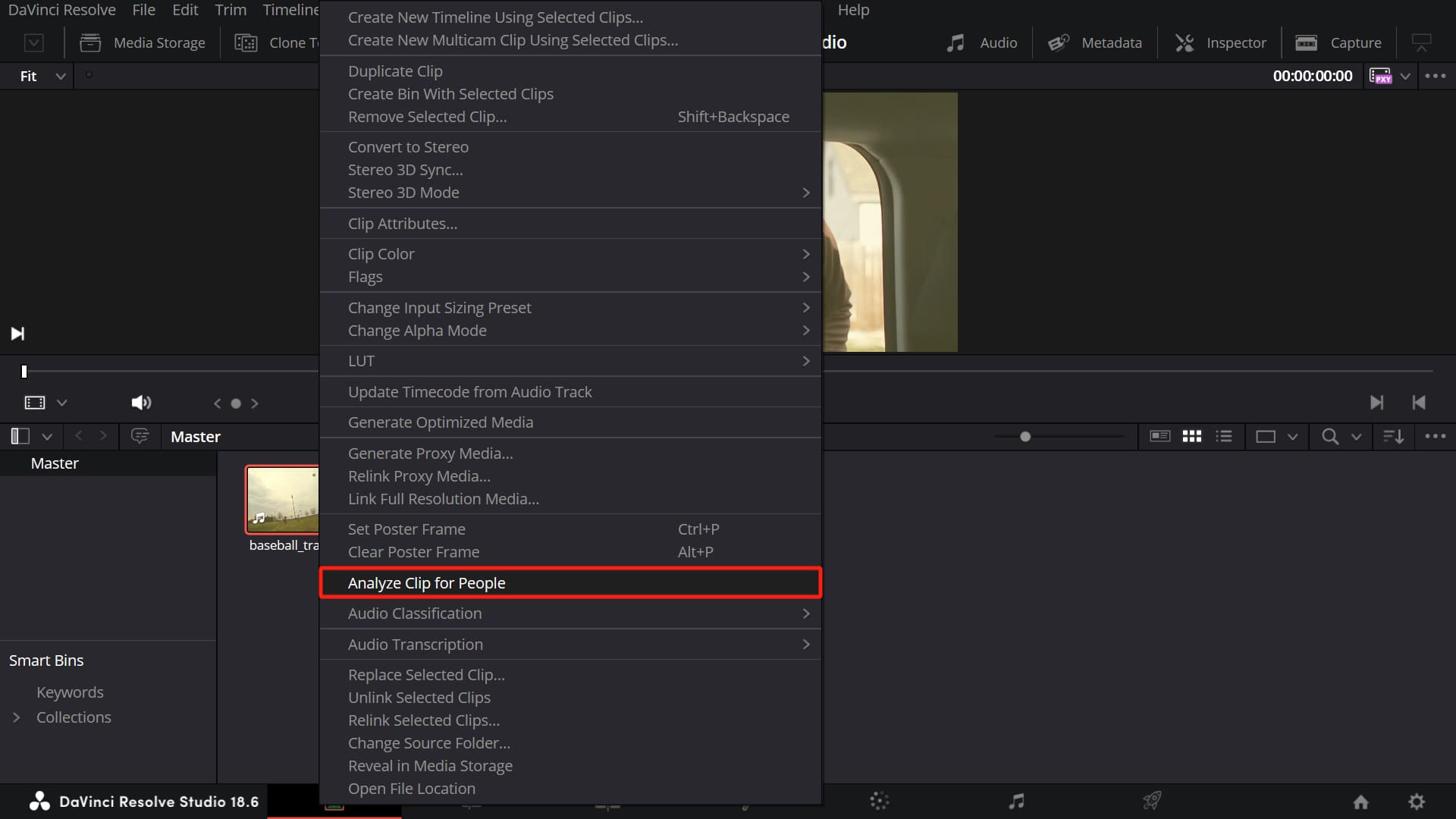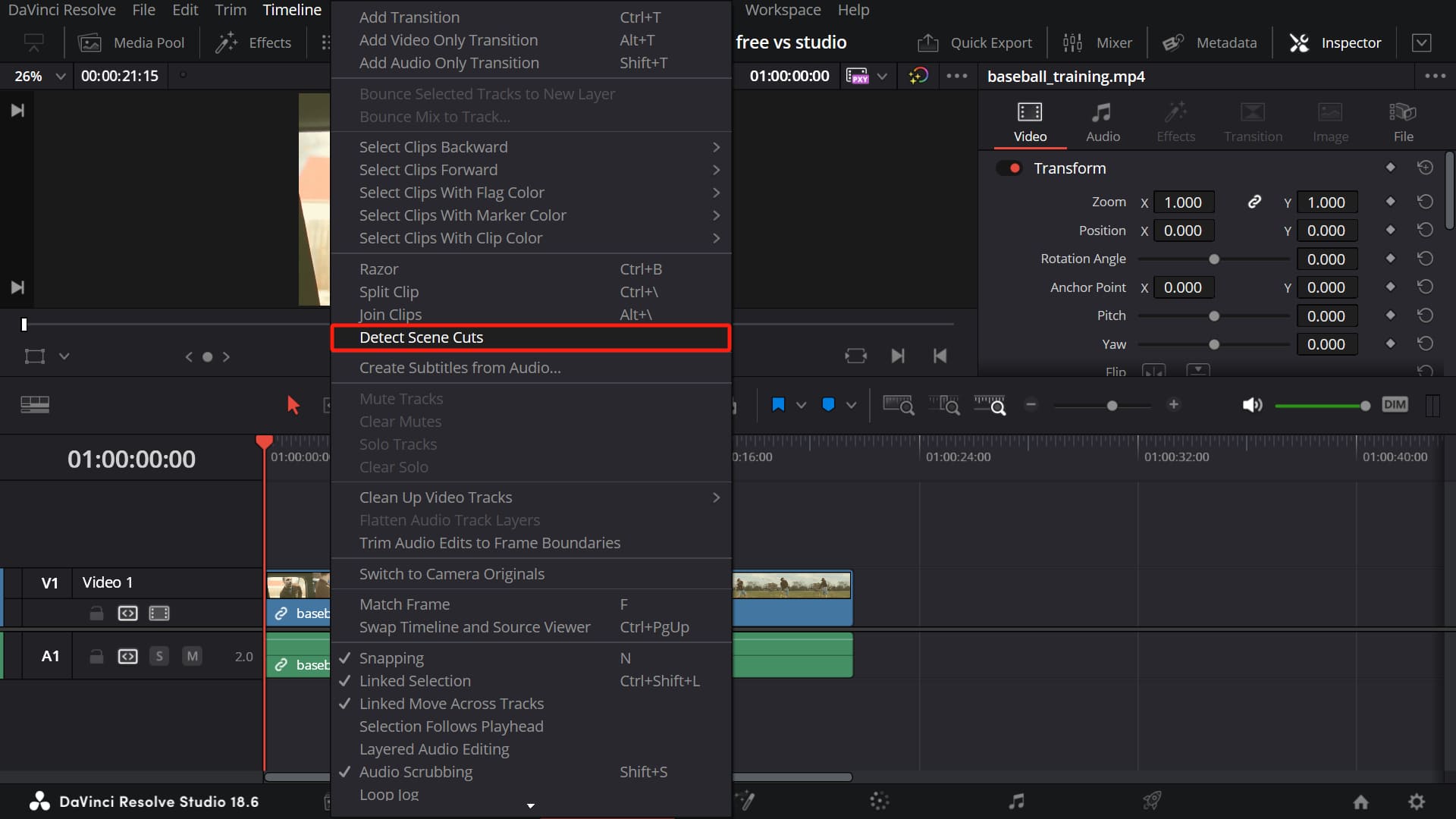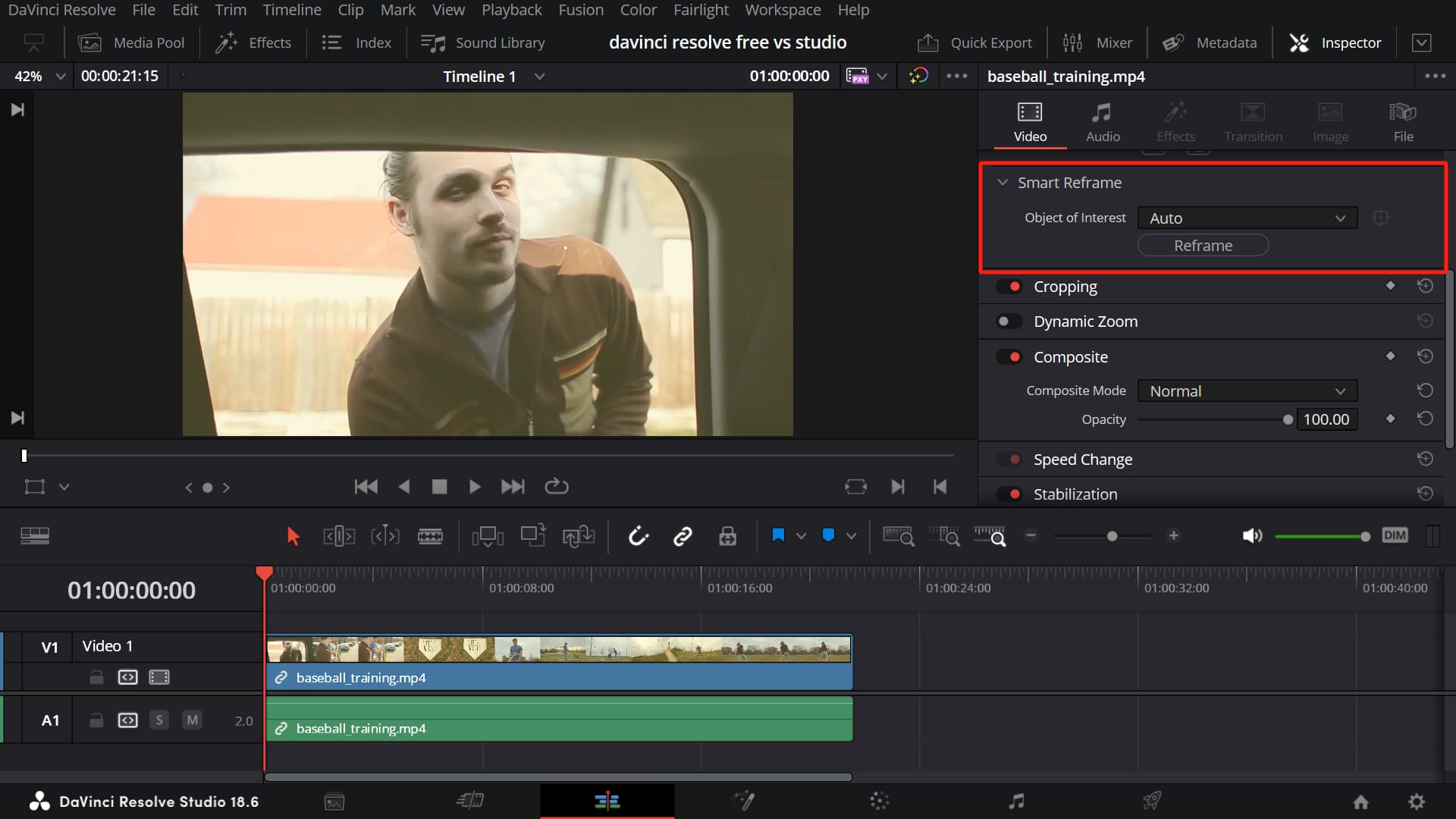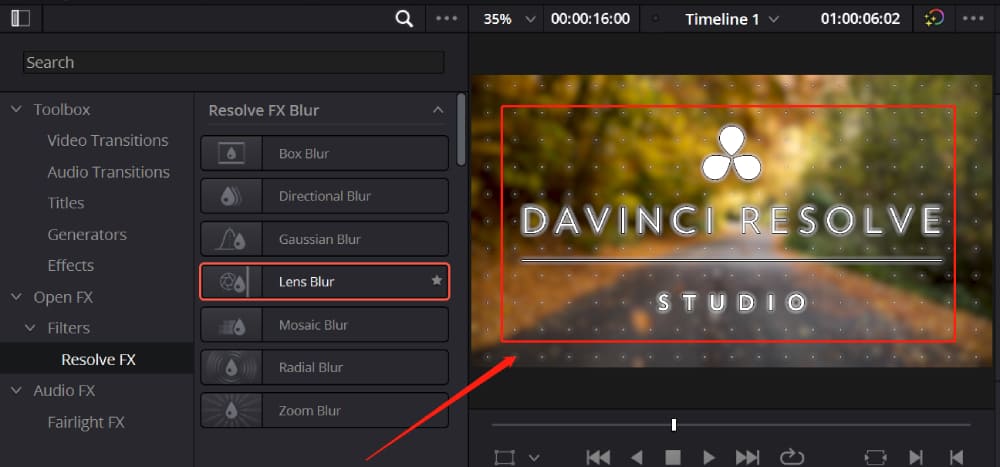DaVinci Resolve Free VS Studio: Should You Upgrade?
DaVinci Resolve is a leading post-production software with comprehensive features including editing, color correction, audio post-production, visual effects, and more.
However, when it comes to choosing between the free version and the Studio version of DaVinci Resolve, which one is the best option for you? If you're already a DaVinci Resolve user, you may be unsure about whether to upgrade to the paid Studio version.
In this article, we will try to help you make an informed decision. So let's get started!

In this article, you will learn:
- Why Does Davinci Resolve Have a Free Version?
- Davinci Resolve Free VS Studio: What's the Difference?
- DaVinci Resolve Free VS Studio: Should You Upgrade?
- Frequently Asked Questions About DaVinci Resolve Free VS Studio
Why Does Davinci Resolve Have a Free Version?
While the free version of DaVinci Resolve doesn't unlock all of its features, after experiencing the magic of DaVinci Resolve, you may wonder why there is a free version available.
After all, the free version of DaVinci Resolve already offers powerful capabilities, and similar video editing software of comparable strength is usually paid.
This can be seen as a clever marketing strategy by Blackmagic Design. DaVinci Resolve serves as a gateway into the Blackmagic Design ecosystem.
Blackmagic Design wants people to create amazing content with the free version, but they also hope that as users reach a certain skill level, they will have the opportunity to unlock more professional features.
The idea behind Blackmagic Design's strategy is that as you dive deeper into DaVinci Resolve, you become interested in their other hardware offerings, such as editing keyboards, color grading panels, or ATEM mini, and so on.
As your professional skills grow, you will invest more in Blackmagic products. This strategy has proven to be successful so far, and there are no indications that the company will change this approach in the short term.
Speaking of hardware for DaVinci Resolve, besides Blackmagic's own products, TourBox is also a great choice. TourBox is a creative tool designed to greatly enhance the efficiency of photographers, creative artists, and digital art professionals.

With TourBox, you can seamlessly interact with various image, audio, digital painting, and office software, including DaVinci Resolve. This means that with just one TourBox, you can experience the joy of one-handed control in multiple software applications. You can even use TourBox to watch YouTube videos or listen to Spotify music.
Imagine being able to perform multiple complex operations in DaVinci Resolve with just one hand on TourBox. The process is simple and efficient, making you feel like a DJ, with your fingers dancing on the TourBox, while video editing becomes a breeze.
Davinci Resolve Free VS Studio: What's the Difference
In this section, we will guide you through the differences between the free version and the Studio version of DaVinci Resolve, based on the page order within the software. This will help you determine whether the free version meets your needs or if you should consider upgrading to the paid version.
1. Media Page
As you upgrade your camera equipment and move towards a more professional workflow, you'll notice the variations between the free and Studio versions on the Media page.
While the free version of DaVinci Resolve covers a wide range of formats and codecs, it's the Studio version that truly shines with its support for advanced formats such as AVCHD, HEIF, J2K HT, and Sony XAVC.
Additional Tip:
You can find a comprehensive list of all supported codecs directly on the Blackmagic website.
Another feature that the free version lacks is "Analyze Clip for People," which allows you to create smart bins for different actors. This is a useful organizational tool for longer projects involving multiple actors.

2. Cut And Edit Page
Firstly, there is a difference in computational performance between the free version and the Studio version of DaVinci Resolve. While both versions utilize GPU processing, only the Studio version can take advantage of multiple GPUs, which can significantly speed up your workflow, especially for larger projects.
In terms of timeline management, Studio offers a very useful feature called "Detect Scene Cuts." It automatically analyzes your clips and splits them into individual cuts based on scene changes, making it easier to work with them on the timeline.

On the Inspector panel, there are two features exclusive to the Studio version. One is "Smart Reframe," which automatically centers the most important part of your video when zooming in or using a different aspect ratio than the source footage. The other is "Lens Correction," used to eliminate optical distortions.

Both the free and paid versions include collaboration tools for multi-user projects, but only the Studio version supports syncing markers and comments with Dropbox, as well as remote grading, remote rendering, and remote monitoring capabilities.
3. Color Page
Color grading is the most renowned aspect of DaVinci Resolve, so even the free version provides a plethora of color grading tools. You can definitely use these free tools to professionally enhance your video footage.
However, if you want to take your video processing to the next level, the features offered by the free version may be insufficient.
On the Color page, the most significant exclusive feature of the Studio version is Magic Mask. This tool utilizes Neural Engine, also known as AI, to significantly save your time when it comes to video masking.

There are many other tools and effects available exclusively in the Studio version. Due to their abundance, it's impossible to list them all. However, without a doubt, the Studio version allows you to experience more magical functionalities.
If you apply an effect in the Effects panel and notice a DaVinci Resolve watermark in the Viewer panel while previewing your footage, it indicates that this effect can only be used in the Studio version.

In the following two tutorials, we share methods on how to color grade in DaVinci Resolve, including tips for using tools like Magic Mask. You might be interested in:
4. Fusion Page
Interestingly, on the Fusion page of DaVinci Resolve, there are only minor differences between the free version and the Studio version.
The functionalities exclusively available in the Studio version include:
- Fusion Camera Tracker
- Fusion VR toolkit
- Controlling scripts from local or remote computers
Therefore, in the free version, you can access the vast majority of features provided by Fusion. Although learning this page may be a bit challenging, especially with concepts like nodes, once you grasp them, you can create impressive effects here.
5. Fairlight Page
You can perform powerful audio processing on the Fairlight page of DaVinci Resolve. The free version also provides many features, although the following functionalities are only available in the Studio version:
- Voice Isolation (to eliminate unwanted ambient sounds)
- Dolby Atmos audio
- MPEGH import and rendering
- B-chain processing
- Auro-3D audio
The above are just a few examples of the features available in the Studio version of DaVinci Resolve. While the Studio version offers superior professional-level audio processing capabilities, for general video production, the features provided by the free version of DaVinci Resolve are already quite powerful.
6. Deliver Page
On the Deliver page and export options, there are significant differences between the free version and the Studio version of DaVinci Resolve.
The free version is limited to exporting in 4K Ultra HD and 60 frames per second. The Studio version, on the other hand, allows for exporting advanced HDR content with resolutions as high as 32K and frame rates of up to 120 frames per second.
So, if you need to create videos in DCI 4K 4,096 x 2,160 or even higher resolutions, you must choose the Studio version.
DaVinci Resolve Studio also supports hardware-accelerated codecs like H.264 and H.265. This not only speeds up the processing of such footage but also significantly reduces rendering time during export.
DaVinci Resolve Free VS Studio: Should You Upgrade?
Before deciding whether to upgrade to DaVinci Resolve Studio, there are a few key factors worth considering.
1. Feature Requirements
Firstly, you need to consider your feature requirements. If you need access to advanced features in DaVinci Resolve, such as multi-user collaboration, 3D tools, HDR grading, and special effects, upgrading to the Studio version might be a good choice.
However, if you primarily focus on basic editing and color grading, the free version may already be sufficient.
2. Performance Needs
Secondly, the Studio version offers better performance and efficiency. For example, Studio version supports GPU acceleration, which can significantly speed up rendering and exporting.
If you work with a large volume of high-resolution videos or require fast rendering and exporting in your workflow, upgrading to the Studio version may be worthwhile.
3. Price
Lastly, price is an important consideration. While the cost of DaVinci Resolve Studio is relatively reasonable compared to other professional video editing software (some might even say it's cheap), you still need to weigh this cost against the additional features and performance you'll gain from the Studio version.
4. Conclusion
In conclusion, whether to upgrade to DaVinci Resolve Studio depends on your specific needs and budget. If the free version meets your requirements, you can stick with it until it no longer suffices. As your projects grow in scale, purchasing the paid version may become more meaningful.
Plus, compared to Adobe products, DaVinci Resolve is actually a very affordable software. You only need to make a one-time payment for lifetime software usage and upgrade services. Isn't that great?
Frequently Asked Questions About DaVinci Resolve Free VS Studio
Question: What Are the Performance Differences Between the Free and the Studio Version of DaVinci Resolve?
The Studio version supports GPU acceleration, which greatly enhances rendering and exporting speeds. If you need to work with a large volume of high-resolution videos or require fast rendering and exporting in your workflow, the Studio version may be more suitable for you.
Question: Which Version of DaVinci Resolve Should Beginners Choose?
If you're a beginner, the free version is a good starting point. It provides most of the basic features to meet your needs. As you gain a deeper understanding of DaVinci Resolve and require more advanced features, you can consider upgrading to the Studio version.
Question: Where to Find Tutorials and Resources About DaVinci Resolve?
You can find detailed user manuals and tutorials on the official DaVinci Resolve website. Additionally, there are many tutorials and guides created by community members on platforms like YouTube and other online resources.
Of course, our website also regularly publishes DaVinci Resolve tips and tricks, so feel free to follow us if you're interested.
Question: Can Studio Version Be Used on Multiple Computers?
Yes, you can install and use DaVinci Resolve Studio on multiple computers. However, please note that you cannot use it simultaneously on multiple computers.
Question: What Is the Price of DaVinci Resolve Studio?
The price of DaVinci Resolve Studio may vary depending on the region and sales channels. You can check the latest pricing information on the official DaVinci Resolve website.
Product Recommendation:
If you haven't tried TourBox yet, consider our latest product, TourBox Lite. It's priced lower and easier to get started with, making it perfect for first-time TourBox users. Give this creative tool a try and see how much it can boost your work efficiency.

That concludes our article on DaVinci Resolve Free VS Studio. We hope that through this article, you'll be able to make the best decision for yourself regarding which version of DaVinci Resolve to choose.